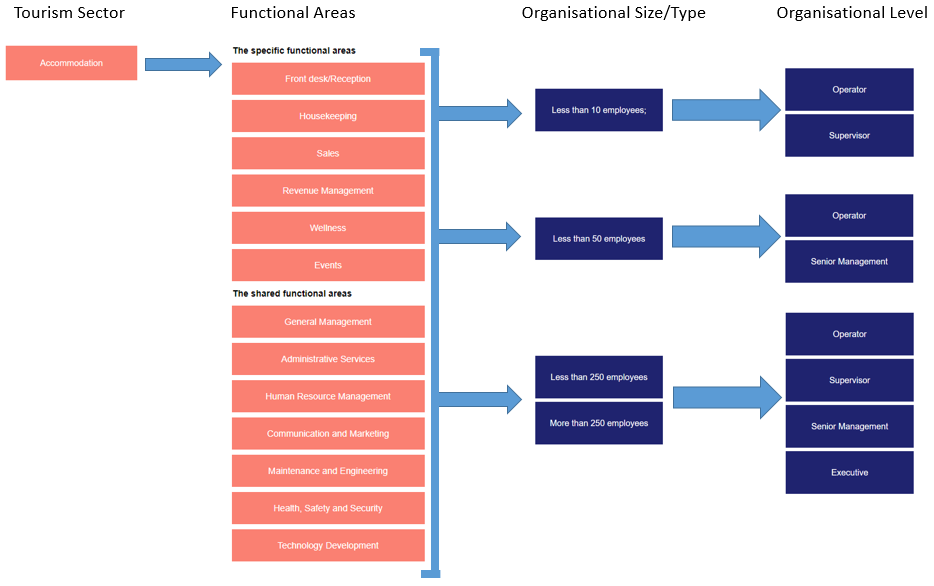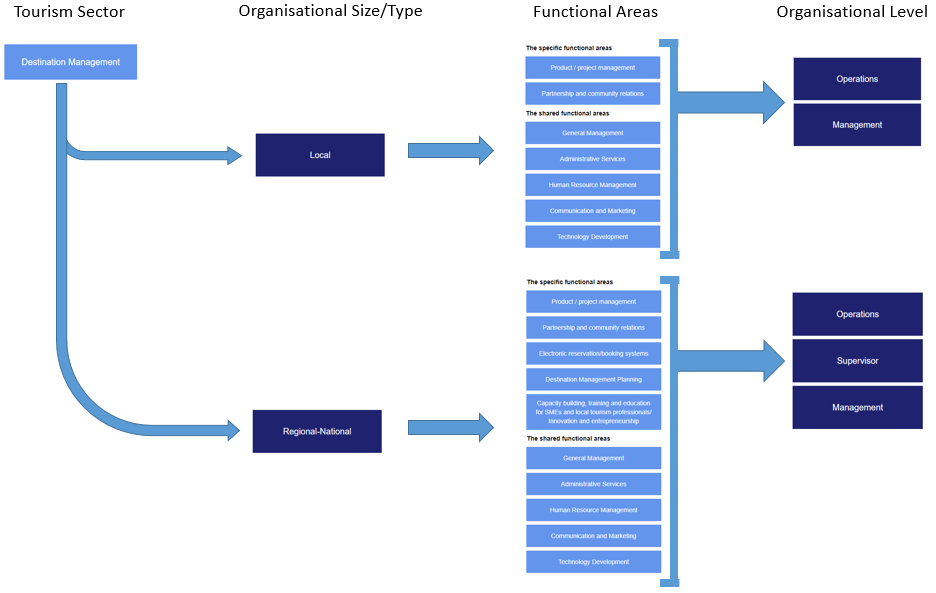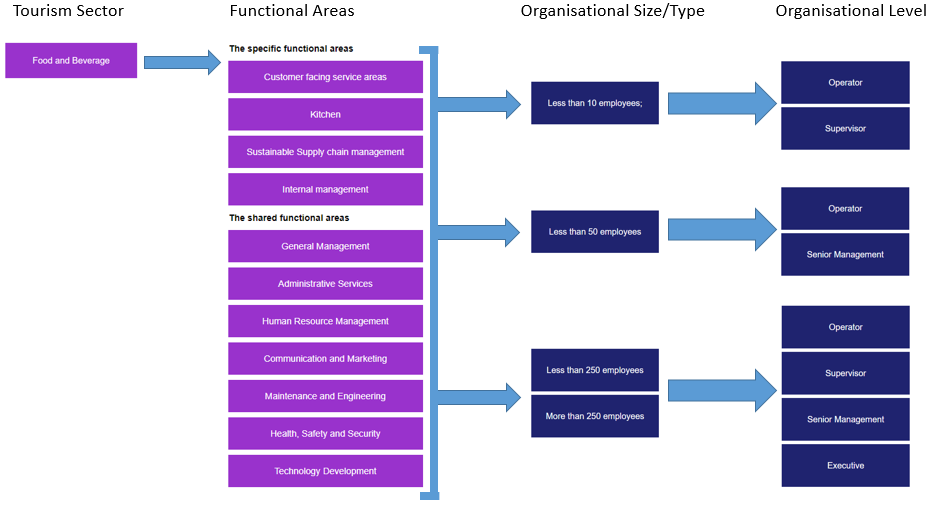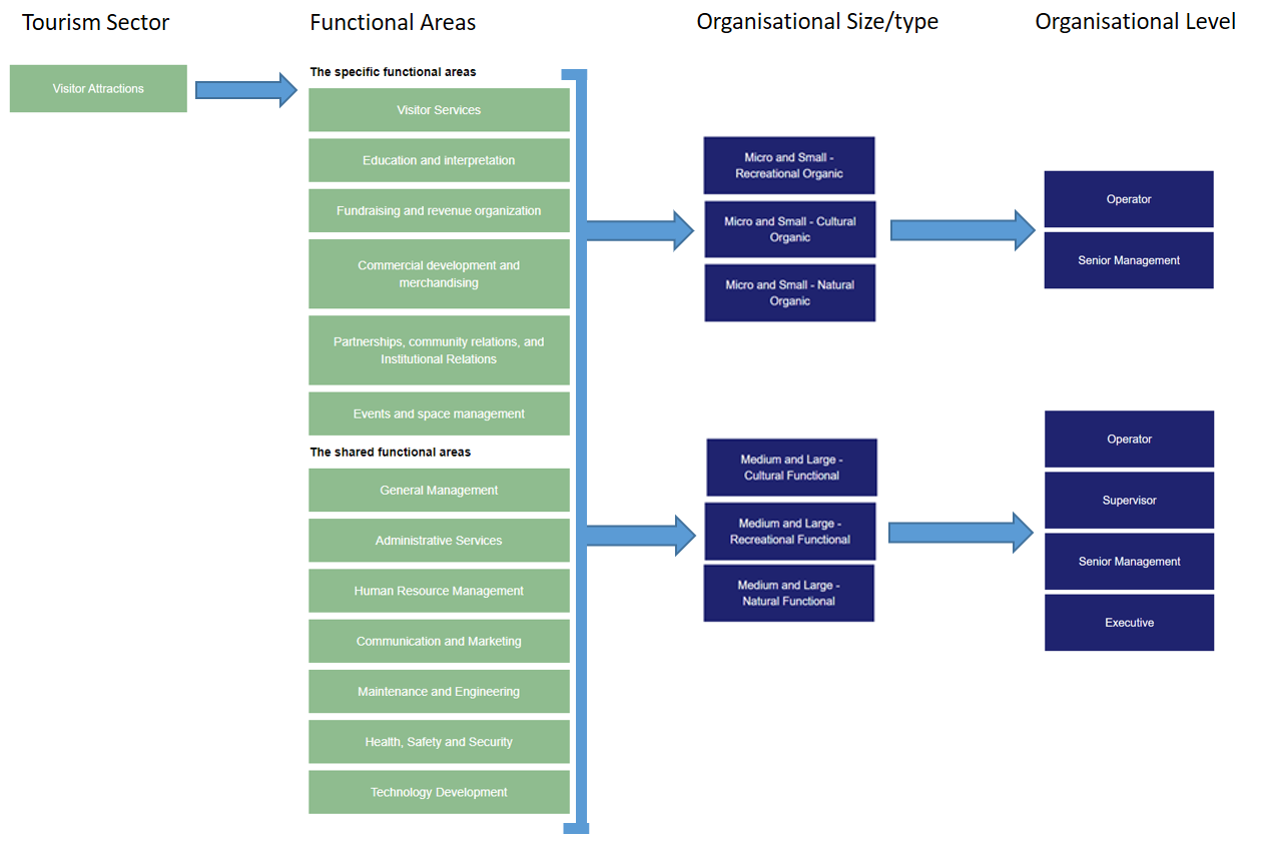As an employer, in your hiring process, it is important to accurately evaluate the skill level of your candidates as it affects their ability to do their job. Assessing these skills can take a wide variety of forms. You may ask candidates for their Curricula Vitae (CV) or to provide evidence of prior work via a writing example, a project, or a presentation. You should assess if the candidate has achieved the skill, is above the skill level or whether their skills can be developed in order to fully achieve the skill in the future.
As the candidate, you need to know the skills required, the skills you have, and how to evidence your skill set and which skills need to be further developed.
To start the skills assessment you must first select the criteria to establish the skills and competencies for the area of work you are interested in, by selecting from the drop down boxes the appropriate criteria (if you need more information to enter the criteria click here)
Alongside each skill there are four columns with a tick box in each, the columns are represented by the following terms: Above and beyond; Match-OK; Partly developed; To be developed. Look at each skill and tick the box if you can evidence this skill or the candidate fully believes they have achieved this skill level. You can click on the magnifying glasses to display the competencies, before deciding the current skill level achieved. Ticking the to be developed or partly developed box is not negative but a discussion point for your professional development. This will become one of the skills you need to develop in the future.
When you have reviewed all of the skills and ticked the boxes, you have completed a skill assessment. In your skills assessment you have identified the skills gap and the requirements for future development. You can print off the findings using the print and download the page as a record for future progress.
As much as job skills reviews are challenging to conduct, they serve a strong purpose in helping employers and employees to collaborate on professional staff development goals, review historical challenges, celebrate accomplishments and establish future plans for improvement.
You must first select the criteria to establish the skills and competencies for the your area, selecting from the drop down boxes your criteria (if you need more information to enter the criteria click here).
Look at each skill and tick the box if you can evidence that the employee(s) has that skill. Click on the magnifying glasses to display the competencies, before deciding the skill level requirements are met. Do not tick the box if the employee does not have all the competencies now, this will become one of the skills that needs developing via training.
When you have reviewed all of the skills and ticked the boxes a Job Review is complete. In the Job Review the identified skills gap and training needs are clearly stated. You can print the Job Review using the print and download the page as a record for future skills progression.
A tour operator varies in size and capacity of operation and typically combines tour and travel components such as hotel, flights, activities and tours to create a package holiday selling directly to the customer or through third parties such as travel agents. Additionally, a tour operator produces itineraries to combine these components to promote travel related products and holidays to a wide range of customer markets. A tour operator may also sell individual components separately. Many tour operators work only on a B2B basis, or as bed-banks.
A travel agent is an agent who sells holidays or separate components including hotels, flights or tours. Generally travel agents do not organize packages for sales through a third party (e.g. another travel agent) but may sometimes create individual trip packages for customers from separate services or elements. Sustainable tourism and digital transformation are driving tour operators and travel agents to increased use of productivity-enhancing technologies (e.g. cloud computing, data analytics, revenue management software) and innovative technologies such as virtual and augmented reality to generate, customise and deliver new tourist products, services and experiences.

- Hotels, bed and breakfast, hostels, pensions, motels, and residences
- Private homes marketed for tourist purposes
- Apartments, villas, self-catering, serviced and non-serviced establishments
- Rural accommodation, camping and lodges
Accommodation is a diverse, fast changing sector that is increasingly expected to: utilise digital technology effectively; provide excellent customer service; quality business services and innovative service design; implement environmental management practices and environment friendly products; sell unique visitor experiences including access to leisure, cultural events and the arts, local cuisine. Ranging from large-scale operators to small and micro business owners the accommodation sector utilises a wide range of digital platforms for sales and relationship management with their customers. User-friendly websites with effective, smooth online booking services are expected by customers. Soft social skills including interpersonal, communication, diversity and language encourage an attitude that promotes flexibility and service orientation. The emergence of home-sharing and other formats of hospitality has added a new dimension to traveling; spending the night away from home is not just about staying in a property anymore.

According to the United Nations World Tourism Organization (UNWTO), Destination management consists of the “coordinated management of all the elements that make up a tourism destination” including tourism businesses, maintenance of key tourism infrastructure, visitor management, tourism promotion and public relations and maintaining a healthy and hygienic environment for residents and visitors. Destination management takes a strategic approach to link-up these sometimes very separate elements for the better management of the destination. Such coordinated management can help to avoid overlapping functions and duplication of effort with regards to promotion, visitor services, training, business support and identify key issues at the destination.
Destination management calls for a coalition of many organizations and interests working towards a common goal, ultimately providing the assurance of the competitiveness and sustainability of the tourism destination. The Destination Management Organization’s (DMO) role should be to lead and coordinate activities under a coherent strategy in pursuit of this common goal.

The commercial food and beverage sector includes a process of preparing, presenting and serving food and beverages to customers at a particular location through restaurants, cafes, pubs, clubs, accommodation, visitor attractions and market food stalls. This includes fresh, prepared foods as well as packaged foods, and alcoholic and non-alcoholic drinks or beverages. There is a growing trend in gastronomy and food tourism which support local produce procurement.
With the increase in importance of business meetings and personal and social events, a large number of customers visit catering establishments frequently. Recognition of specific diet and allergy requirements and regulation of allergy information for customers is of increasing importance. Food waste management is a key sustainability skill set which is becoming increasingly urgent to reduce waste from hospitality businesses.

Visitor attractions comprise a wide field of installations and services in the following three categories, which vary significantly in area size of the business, number of employees and type of attraction. The terms natural, cultural and recreational are used when describing different sizes of business in the size category.
Natural attractions are those created by nature such as country parks, biosphere reserves, geoparks, caves, waterfalls, lakes or beaches. They also include manmade attractions based on natural elements such as botanic gardens, city parks, groves and orchards, as well as zoos and animal parks. The main purpose of management is conservation and education and therefore also require scientific knowledge and skills.
- Country Parks
- Gardens
- Wildlife Attractions / Zoos
- Beaches, caves, canyons, etc.
- Other
Cultural attractions are the result of the history of mankind, intellectual capacity and artistic ability. They encompass historic properties, places of worship, heritage venues, visitor centres as well as Museums and Galleries. The main purpose of management is education and conservation and therefore require also scientific knowledge and skills.
- Historic Properties
- Museums / Art Galleries / Cultural Exhibitions
- Steam / Heritage Railways
- Visitor / Heritage Centres
- Workplaces
- Places of Worship
- Other
Recreational attractions are those built for leisure and entertainment and therefore they do not need scientific staff. They range from small venues such as Escape Rooms to large Theme Parks. This section excludes zoos and animal parks because the management of wildlife requires scientific knowledge and skills and therefore are included under natural attractions.
- Theme Parks
- Leisure attractions
- Escape rooms
- Other

